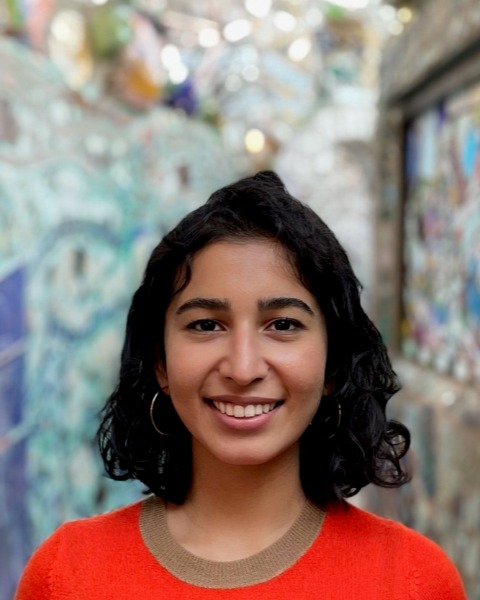Back
Poster, Podium & Video Sessions
Moderated Poster
MP30: Global Health/Humanitarian
MP30-11: COVID-19 Vaccination in an Inner-City Urology Population from September - October 2021
Saturday, May 14, 2022
1:00 PM – 2:15 PM
Location: Room 222
Meher Pandher*, Courtney Berg, Gabriel Fernandez, Chrystal Chang, Amjad Alwaal, Robert Weiss, Newark, NJ

Meher Pandher, BA
New Jersey Medical School
Poster Presenter(s)
Introduction: New Jersey has the fourth highest death rate due to COVID-19 in the United States over the past year and a half. As of October 2021, 66% of the New Jersey population has been fully vaccinated against COVID-19. The objective of this study is to examine the demographics and rate of vaccination of patients in an underserved, inner-city urology clinic population in Newark, New Jersey.
Methods: Anonymous surveys were distributed during urology clinics in Newark recording patient’s age, sex, race, insurance status, reason for clinic visit, other medical problems, previous COVID infection, infection of family members with COVID, COVID vaccination status and type, reasons for forgoing the vaccine, and likelihood of receiving the vaccine in the future. Data from 246 surveys administered from 9/27/2021 - 10/25/2021 was compiled and analyzed with descriptive statistics
Results: 78% of the clinic patients were men of the average age of 60. The population was primarily patients of Hispanic (45.9%) and African American (41.9%) descent. 9.3% of patients were white, 1.5% asian, and 1.5% “other”. 55.2% of patients had managed medicaid, 15.4% had medicare, 16.7% were uninsured, 12.2% had charity care, and 0.4% were incarcerated. Many patients never had a COVID-19 infection (79.7%) and neither did any of their family members (79.3%). 78.5% of patients received a COVID vaccination, the most popular one being Moderna (47.4%) followed by Pfizer (44.9%), and Johnson & Johnson (7.7%). Of the 21.5% of patients who were not vaccinated, 55.8% did not plan to receive the vaccine, 30.8% were unsure, and 13.4% said they would in the future. When asked about their reasons for deferring the vaccine, 61.5% of unvaccinated patients expressed concern about the vaccine’s short term side effects, long term side effects or a combination of the two. The other 38.5% reported wanting to wait to see how others responded to the vaccine, reported lack of information about the vaccine, mentioned wanting to avoid unnecessary medication, believed they didn’t need the vaccine, or were unable to register for it. The unvaccinated patients were predominantly African American (48.1%), male (76.9%), and of the average age of 51. 80.8% of unvaccinated patients never had covid and for 82.7%, neither did any of their family members.
Conclusions: COVID-19 vaccine reluctance continues to be a national issue. We were encouraged by the higher than expected vaccination rates in our clinic. Further measures should be taken to elucidate the perceived side effects of the COVID-19 vaccine to encourage vaccine use.
Source of Funding: none
Methods: Anonymous surveys were distributed during urology clinics in Newark recording patient’s age, sex, race, insurance status, reason for clinic visit, other medical problems, previous COVID infection, infection of family members with COVID, COVID vaccination status and type, reasons for forgoing the vaccine, and likelihood of receiving the vaccine in the future. Data from 246 surveys administered from 9/27/2021 - 10/25/2021 was compiled and analyzed with descriptive statistics
Results: 78% of the clinic patients were men of the average age of 60. The population was primarily patients of Hispanic (45.9%) and African American (41.9%) descent. 9.3% of patients were white, 1.5% asian, and 1.5% “other”. 55.2% of patients had managed medicaid, 15.4% had medicare, 16.7% were uninsured, 12.2% had charity care, and 0.4% were incarcerated. Many patients never had a COVID-19 infection (79.7%) and neither did any of their family members (79.3%). 78.5% of patients received a COVID vaccination, the most popular one being Moderna (47.4%) followed by Pfizer (44.9%), and Johnson & Johnson (7.7%). Of the 21.5% of patients who were not vaccinated, 55.8% did not plan to receive the vaccine, 30.8% were unsure, and 13.4% said they would in the future. When asked about their reasons for deferring the vaccine, 61.5% of unvaccinated patients expressed concern about the vaccine’s short term side effects, long term side effects or a combination of the two. The other 38.5% reported wanting to wait to see how others responded to the vaccine, reported lack of information about the vaccine, mentioned wanting to avoid unnecessary medication, believed they didn’t need the vaccine, or were unable to register for it. The unvaccinated patients were predominantly African American (48.1%), male (76.9%), and of the average age of 51. 80.8% of unvaccinated patients never had covid and for 82.7%, neither did any of their family members.
Conclusions: COVID-19 vaccine reluctance continues to be a national issue. We were encouraged by the higher than expected vaccination rates in our clinic. Further measures should be taken to elucidate the perceived side effects of the COVID-19 vaccine to encourage vaccine use.
Source of Funding: none

.jpg)
.jpg)